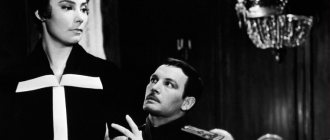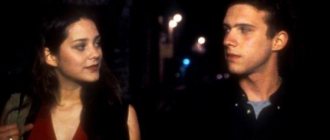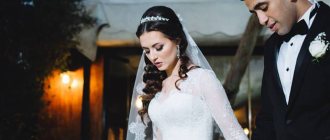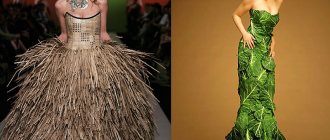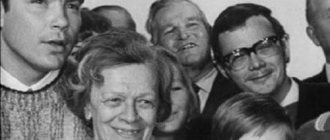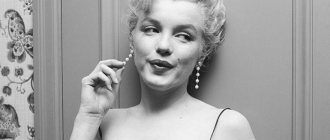Frida Kahlo is one of the most prominent figures in twentieth-century art. Despite the terrible accident that changed her whole life, Frida managed to find herself, become one of the best artists in the world and maintain her fortitude until her last days.
In this article you will learn about:
- Frida Kahlo's childhood;
- the beginning of an artistic career;
- difficult relationship with Diego Rivera;
- recognition of Frida in America;
- famous quotes from the artist.
Portrait of Frida Kahlo, 1926
Frida's childhood
Frida Kahlo Calderon was born in the village of Coyoacan on the outskirts of Mexico City on July 6, 1907, to the family of photographer Guilleremo Kahlo and Matilda Calderon. Kahlo claimed that she was born in the famous azure house, which is now photographed by thousands of tourists coming to Mexico City, but in fact the birth took place in a neighboring house where Frida's grandmother lived.
At the age of six, Kahlo fell ill with polio - a disease that usually affects the nervous system and can lead to paralysis of the limbs or the entire body. In Frida's case, the disease affected her right leg, causing it to become thinner than her left. Kahlo hid her illness under long skirts all her life.
The illness made Frida withdrawn, her peers began to mock her, but within the family the girl was surrounded by care. Guilleremo's father trained his daughter in boxing to help her recover, despite the fact that this sport was considered a boy's sport. He also taught Frida literature and philosophy, taught her how to photograph and retouch photographs.
Due to polio, Kahlo went to school later than other children. At first she entered a German school, but from there she was expelled for disobedience and sent to a school where teachers were trained. There the girl faced harassment from a teacher and soon left school again.
In 1922, when Frida was 15 years old, she entered one of the best educational institutions in Mexico - the National Preparatory School "Preparatoria". There she studied medicine and prepared to become a doctor. It was not easy to get there, especially since at that time girls had just begun to be accepted into this institution, but Kahlo showed good results in her studies. Of the 2,000 students admitted that year, there were only 35 girls.
Kahlo felt awkward about being the oldest in her year, so she hid her real age. She said that she was born in 1910, the year the revolution began, and called herself “the daughter of the revolution.” Inside the school, Kahlo, together with eight classmates, organized an informal circle, “Cachuchas.” There they studied art and philosophy. Members of the circle also cultivated ideas of national identity and liberation from colonial thinking. Later, all members of the Cachuchas would become major figures in the Mexican cultural elite.
“Wooden Leg”: how Frida became a cripple
In the suburbs of Mexico City there was a building that was called the Blue House because of the cobalt paint on the walls. The family of the Lutheran German emigrant Guillermo Calo and the beautiful Mexican woman with Indian roots, Matilda, . On July 6, 1907, their third daughter was born, Frida .
At the age of six, the girl suffered from polio. After the illness, her right leg became shorter and much thinner than her left. Frida subsequently hid this physical defect all her life under long skirts or men's trousers.
But she couldn’t hide her lameness, which is why the boys teased her with her “wooden leg.” But Frida could stand up for herself and punish the offenders. She practiced boxing and generally loved sports. And her sharp mind and lively character made her a leader in any company.
In 1922, the famous Mexican artist Diego Rivera painted the ceilings of the National Preparatory School. He periodically heard a girl's voice shouting insults at him. But he could not find the hooligan herself, hiding behind the columns.
Some time later, when Diego was working on the scaffolding with his second wife Lupe Marin , a student was pushed into their classroom. The girl asked permission to watch the work of the great artist. She did not take her eyes off the man, and this began to irritate Marin.
The woman began to make sarcastic remarks about the young fan, and then could not stand it and approached the girl closely with a menacing look. But the student calmly met the gaze of the artist’s wife, which delighted the woman. At the end of the day, the girl, leaving, said only two words, “Good night,” and Rivera recognized the voice of that same hooligan.
Frida Kahlo at age 12. Source: wikipedia
The accident and the beginning of the artistic journey
Frida was 18 years old when she and her boyfriend Alejandro had a terrible accident: the wooden bus they were traveling on collided with a tram. Frida received serious injuries: a triple fracture of the spine (in the lumbar region), a fractured collarbone, broken ribs, a triple fracture of the pelvis, eleven fractures of the bones of the right leg, a crushed and dislocated right foot, and a dislocated shoulder. In addition, the metal railing went through her pelvis.
She spent a month in the hospital, and after that she was bedridden for almost a year. She had to give up her career as a doctor, so Frida thought about becoming a medical illustrator. She asked her father for brushes and paints. A special stretcher was installed for her, which allowed her to write while lying down, and a large mirror was attached under the canopy of the bed.
Lying in bed, recovering from a serious accident, she began to paint her first paintings. Since then, themes of death and the fragility of the human body have often appeared in her paintings. And the hospital bed became a definite symbol of her work.
Most of the works that Kahlo painted during that time were portraits of her sisters, school friends and herself. But the very first painting was a self-portrait, which forever determined the main direction of creativity: “I paint myself because I spend a lot of time alone and know myself best.”
After recovering, Frida joined the Mexican Communist Party and met many political activists and artists, including exiled Cuban communist Julio Antonio Melle and photographer Tina Modotti. It was the latter who introduced Frida to her future husband, Diego Rivera, one of the most successful artists of that time.
Biography of the artist
Kahlo Frida (1907-1954), Mexican artist and graphic artist, wife of Diego Rivera, master of surrealism.
Frida Kahlo was born in Mexico City in 1907, in the family of a Jewish photographer, originally from Germany. Mother is Spanish, born in America. She suffered from polio at the age of six, and since then her right leg has become shorter and thinner than her left.
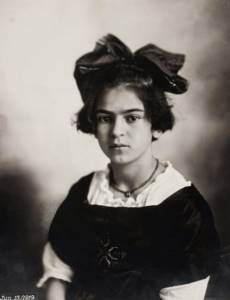
At the age of eighteen, on September 17, 1925, Kahlo was in a car accident: a broken iron rod from a tram's current collector stuck in her stomach and came out at her groin, shattering her hip bone. The spine was damaged in three places, two hips and a leg were broken in eleven places. Doctors could not vouch for her life.
The painful months of motionless inaction began. It was at this time that Kahlo asked her father for a brush and paints.
For Frida Kahlo, they made a special stretcher that allowed her to write while lying down. A large mirror was attached under the canopy of the bed so that Frida Kahlo could see herself.
She started with self-portraits. “I write myself because I spend a lot of time alone and because I am the subject I know best.”
In 1929, Frida Kahlo entered the National Institute of Mexico. During a year spent in almost complete immobility, Kahlo became seriously interested in painting. Having started walking again, she attended art school and in 1928 joined the Communist Party. Her work was highly appreciated by the already famous communist artist Diego Rivera.
At 22, Frida Kahlo married him. Their family life was seething with passions. They could not always be together, but never apart. They shared a relationship that was passionate, obsessive and sometimes painful.
An ancient sage said about such relationships: “It is impossible to live either with you or without you.”
Frida Kahlo’s relationship with Trotsky is shrouded in a romantic aura. The Mexican artist admired the “tribune of the Russian revolution”, was very upset about his expulsion from the USSR and was happy that, thanks to Diego Rivera, he found shelter in Mexico City.
Most of all in life, Frida Kahlo loved life itself - and this magnetically attracted men and women to her. Despite the excruciating physical suffering, she could have fun from the heart and carouse widely. But the damaged spine constantly reminded of itself. From time to time, Frida Kahlo had to go to the hospital and almost constantly wear special corsets. In 1950, she underwent 7 spinal surgeries, spent 9 months in a hospital bed, after which she could only move in a wheelchair.
In 1952, Frida Kahlo's right leg was amputated at the knee. In 1953, Frida Kahlo's first solo exhibition took place in Mexico City. In not a single self-portrait does Frida Kahlo smile: a serious, even mournful face, fused thick eyebrows, a barely noticeable mustache above tightly compressed sensual lips. The ideas of her paintings are encrypted in the details, background, figures appearing next to Frida. Kahlo's symbolism is based on national traditions and is closely connected with Indian mythology of the pre-Hispanic period.
Frida Kahlo knew the history of her homeland brilliantly. Many authentic monuments of ancient culture, which Diego Rivera and Frida Kahlo collected throughout their lives, are located in the garden of the Blue House (house museum).
Frida Kahlo died of pneumonia a week after celebrating her 47th birthday, on July 13, 1954.
“I look forward to leaving cheerfully and hope never to return. Frida."
The farewell ceremony for Frida Kahlo took place at Bellas Artes, the Palace of Fine Arts. Frida, along with Diego Rivera, was accompanied on her final journey by Mexican President Lazaro Cardenas, artists and writers - Siqueiros, Emma Hurtado, Victor Manuel Villaseñor and other famous Mexican figures.
Marriage of a dove and an elephant
Diego Rivera himself described one of his first meetings with Frida: “I was working on one of the frescoes in the building of the Ministry of Education when I heard: “Diego, please come down from there!” I want to discuss something important with you!” I turned my head and looked down. On the ground below me stood a girl of about eighteen. She had a beautiful, nervous body, topped with a delicate face. Her hair was long; dark and thick eyebrows met above the bridge of the nose. They looked like the wings of a blackbird, and their black arches framed two dark brown eyes.”
Frida Kahlo and Diego in Mexico City, 1933. Photographer: Martin Munkácsi
Frida told Rivera, “I didn’t come here for fun. I need to earn a living. I painted several paintings and I want you to evaluate them like a professional. I need an honest opinion because I can't just indulge my vanity. I want you to tell me honestly if I can become a good enough artist to make it worth my time. Will you look at them?
Kahlo showed him three portraits. Rivera was impressed; he found the paintings to have unusual energy, character, and at the same time seriousness. They did not have the techniques that beginning artists usually resort to in order to seem original. On the contrary, Rivera saw in them honesty and originality. It was obvious to him that Frida was a real artist. “I didn’t know it then, but Frida had already become the most important part of my life. And she remained until her death over the next 27 years,” Diego wrote.
Despite the fact that Rivera was 20 years older than Kahlo, they began dating and planned to get married. Frida's mother was against the union and called it a marriage between a dove and an elephant: Rivera was tall and heavy-set, and Kahlo was petite and fragile. The father approved the marriage. He knew that Rivera was rich and could easily support his family.
After their wedding, Frida and Diego moved to the state of Morelos, where some of the heaviest fighting took place during the civil war. This move left its mark on Kahlo's work. She increasingly found inspiration in Mexican folk art. Also, according to historian Andrea Kettenmann, she was seriously influenced by the treatise of the Mexican artist Adolfo Best Maugard. In her work one can find the techniques he generally described: a lack of perspective and a combination of elements from the pre-Columbian and colonial periods of Mexican art.
Like many Mexican artists, Frida began to wear dresses of the pre-Hispanic era: long colorful skirts - Tehuana costume, elaborate headdresses and massive jewelry. This style helped Frida express her feminist and anti-colonial ideals; she did not want to submit to European fashion - and she remained true to her style even when she and Diego moved to San Francisco in 1931.
Two accidents: fate cruelly tested Frida Kahlo
On September 17, 1925, Frida was traveling by bus on urgent business. The driver lost control and crashed into the tram. A terrible accident forever changed the life of 18-year-old Kahlo, who simply miraculously managed to get out of the other world.
She spent several years in a hospital bed. After the collision, she had a triple fracture of the spine in the lumbar region, a triple fracture of the pelvis, a broken collarbone and ribs, the foot of her right leg was crushed and dislocated, in addition, the bones in her leg were broken in 11 places. And this is not counting dislocations and bruises.
But the worst thing is that the girl was practically impaled on a metal railing that pierced her stomach and uterus. From that day on, Frida learned not only to live again, then sit and walk, but also to endure constant, unbearable pain.
Frida Kahlo and Diego Rivera. 1932 Photo: Carl Van Vechten. Source: wikipedia
She had to spend several months in a cast, then lie motionless in bed. And it was at this time that she asked to make her a special stretcher so that she could draw while lying down. Frida asked to fix a mirror on the ceiling and began to paint her self-portrait.
After many months, when Kahlo could move independently, she came to Diego Rivera, who was painting a mural in the building of the Ministry of Education, and asked him to look at some of her works. According to Diego’s recollections, he immediately realized that this was a real artist. And during the conversation, he remembered the girl who shouted insults at him, and then looked at his work in fascination. Rivera later wrote that it was at that moment that Frida became the most important part of his life. And Kahlo admitted that two accidents happened to her: a collision between a bus and a tram and a meeting with Diego Rivera.
American period
In the USA, Diego painted murals for the San Francisco Stock Exchange and the California School of Fine Arts. As in Mexico, in the United States Diego was a celebrity, but Frida was known only as his wife. During this time, she was introduced to famous American photographers and artists, including Nicholas Murray, with whom she began a 10-year romance.
Six months in San Francisco were productive for Frida - she painted one of the most famous paintings, “Frida and Diego Rivera.” This is a double portrait. In the painting, Frida and Diego are standing holding hands - this is a symbol of love. Rivera has a palette and a brush in his hands, because Frida has always admired his talent. Unlike other works where there is a lot of color and different scenes, there is nothing in this one that could distract attention from the characters. Unexpectedly for Frida herself, the canvas ended up at the annual exhibition of the Society of Women Artists - this was the first time her work was presented to the public.
Frida and Diego Rivera, 1931
After a short return to Mexico, Kahlo and Rivera came to the United States again in 1932, this time to Detroit. During this visit, Frida already spoke English fluently and was not shy about communicating with the press. On the first day she said that of the two of them she was the better artist.
She did not like many aspects of life in the United States. Americans for the most part seemed boring and callous to Kahlo. In a letter to a friend, Frida wrote: “I have seen thousands of people here who are experiencing the most terrible suffering without food and without sleep. It's terrible to see rich people partying night and day while thousands of people are dying of hunger." In Detroit, she was also outraged that some hotels did not accept Jewish guests.
Artistically, the year went well. Kahlo began to try new techniques, such as etching and frescoes, and began to focus on themes of pain, fragility of the body, and human suffering. She paints several paintings in the retablo style (Mexican small colorful pictures drawn in gratitude to the saints). Among the paintings painted in the retablo style are the iconic “Henry Ford Hospital” and “Self-Portrait on the Mexico-US Border.”
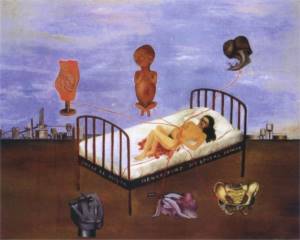
Henry Ford Hospital, 1932
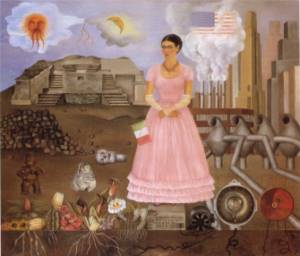
Self-portrait on the Mexico-US border, 1932
The first one was drawn after the second miscarriage. It shows Frida lying in a hospital bed. He holds three red ribbons, like arteries, above his stomach. The end of the first ribbon becomes the umbilical cord, which leads to the embryo - this is the child lost in miscarriage. A snail hovers above the head of the bed - a symbol of the slow progress of a failed pregnancy. The anatomical model of the lower torso above the foot of the bed, as well as the bone model below on the right, indicate the cause of the miscarriage - a damaged spine and pelvis in the accident. The device at the bottom left may symbolize her own “unusable” muscles, which did not allow her to keep the child. The purple orchid shown in the center under the bed was brought to the hospital by Diego.
The second picture demonstrates Frida's ambivalent attitude towards the United States. Kahlo depicts himself on a pedestal as a living statue with a Mexican flag in his hand. Her figure divides the composition into two parts. On the left is our native Mexico, its history and symbols included in the cycle of nature. On the right is the image of the USA, where cars, skyscrapers, mechanisms reign and smokestacks reign.
And although none of the works painted that year were presented at exhibitions in Detroit, a local newspaper did an interview with Frida, which was condescendingly entitled: “The Mural Master's Wife Indulges in Works of Art.”
Returning home and Frida's confession
Returning to Mexico City in 1934, Kahlo wrote Here Hangs My Dress, in which she attempted to portray the shallowness of American capitalism. This painting is filled with icons of modern American industrial society. Usually you can find Frida herself in the paintings, but she cannot be in this one. “I may be in America, but only my dress hangs there, my life is in Mexico,” she said.
My dress hangs here, 1934
Upon arrival, he and Rivera moved to a new house in the expensive San Angel neighborhood. The house was made by a student of Le Corbusier and consisted of two sections. The first, white and red, is the Rivera section, the second, azure, is the Frida section. A small air bridge connected the two houses. This house became an important meeting place for foreign artists and political figures.
Despite the desire to immerse herself in creativity, Frida did not paint. She began to have health problems again: she suffered an appendectomy, two abortions and the amputation of two toes due to gangrene. In addition, their relationship in Rivera became tense - he started an affair with her younger sister Christina, which lasted about a year. As soon as Kahlo found out about this, she wanted to divorce Rivero and even moved to an apartment in the center of Mexico City. True, the separation was short-lived; the couple soon made peace.
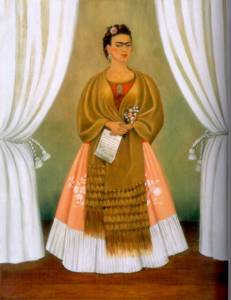
Self-portrait for Trotsky, 1938
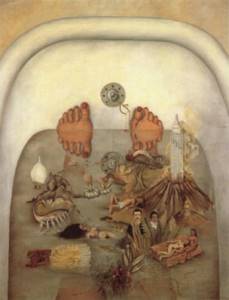
What water gave me, 1939
In 1936, Frida returned to politics and joined Leon Trotsky's Fourth International. Together with Rivera, they appealed to the Mexican government with a request to give asylum to Trotsky, who had fled the Union. He arrived with his wife Natalya Sedova. They settled in Frida Kahlo's azure house. During the two years that Trotsky lived in Mexico, he and Kahlo became friends and lovers. Frida even painted a self-portrait for him. In addition to him, she also created several other important works: “What Water Gave Me,” “Memory (Heart),” “My Nurse and Me.”
Memory (heart), 1937 My nurse and I, 1939
Although Frida was still unsure of her work, in early 1938 the National Autonomous University of Mexico exhibited some of her paintings. In the same year, the French writer Andre Breton organized a personal exhibition in the United States at the Julien Levy Gallery. Despite the Great Depression that gripped the United States, half of the exhibited works were sold. In France, where Breton also promised to organize an exhibition for Frida, technical problems arose; in addition, Marcel Duchamp's gallery agreed to take only two paintings by Frida, calling the rest shocking.
The London exhibition collapsed largely due to lack of funds and the approaching Second World War. At the same time, the Louvre bought one of Frida’s paintings, the self-portrait “Frame,” for its collection. The artist was also warmly received by her Parisian colleagues - Pablo Picasso and Joan Miro. And representatives of the fashion world made her a new style icon - it was at this time that Nicolas Muray created the famous photograph of Frida, which was placed on the cover of the Parisian Vogue supplement. Returning to New York, Frida wanted to renew her relationship with Murray, but found out that he was getting married and was forced to break up with her.
The accident and life after it
In 1925, Frida gets into a terrible car accident - she is hit by a bus. As a result, the girl is diagnosed with injuries that are practically incompatible with life: fractures of the spine and collarbone in three places, fractures of the ribs and hip bone, dislocations, shifts and fractures of almost all bones in the leg, a crushed foot and, worst of all, the stomach and uterus pierced by a machine frame , which immediately puts an end to Kahlo’s reproductive health. And, despite the fact that after the accident the girl finds herself paralyzed in a hospital bed for many months, she successfully withstands a dozen operations and remains unbroken, which in such a situation is a real miracle.
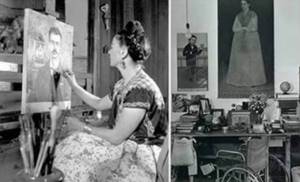
It was there, lying in the hospital, that Frida Kahlo first asked her father to buy her brushes and paints. As the artist herself later admits, “... this was the only activity available to me for many, many months...”.
And since at that time her legs and arms were still not strong after a number of operations, her father specially selects a stretcher for her, and also installs a large mirror opposite the hospital bed, which allows Frida to see herself. A similar idea determines the style of her first paintings. The girl begins to create autobiographical images by looking at her own reflection.
“Some people mistakenly think that my choice of self-portraits is a selfish desire to show how much I love myself. However, this is not true. It’s just that at that time it was the only topic whose meaning was clear and close to me. I didn’t go outside, didn’t even get out of bed - who else could I draw if not myself?”
In order to somehow please his daughter, the father begins to first collect her works and then try to organize an exhibition. He is unable to sell his paintings to the gallery, but another Mexican portrait painter, who is also just starting his career, is interested in the work of Kahlo Frida. For a relatively small amount, he offers his services, and a year later the father takes his daughter to her first own exhibition, taking place in their small town. From that time on, Frida gained popularity and universal approval and became a favorite in her homeland.
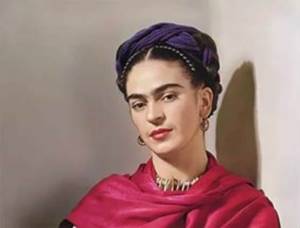
After this, exhibition galleries in several foreign countries began to take an interest in her paintings. In particular, in 1939, Kahlo opened an exhibition in Paris, then visited Spain and Italy several times, where he met many interesting artists and political figures. However, literally a month later, the girl disappears from the world stage due to potent drugs and narcotics, which until that moment had constantly alleviated her condition. Frida's character and mood become changeable, the girl often finds herself either on the verge of a nervous breakdown or in deep depression.
Last years
Bad news awaited her in Mexico City, too. Rivera demanded a divorce, although he publicly stated that “this is a matter of legal convenience and there are no sentimental, creative or economic reasons.” Despite the divorce, they remained friends: she continued to manage his finances and correspondence
After the divorce, the artist painted the painting “Two Fridas.” Her two personalities are depicted here. One is the traditional Frida in Tetuan costume, which Diego liked so much (on the right), the second is in a Victorian-style wedding dress. Both of them are unhappy, because the love of one of them is in the past, and the second is doomed to a life without a heart. And both of them die because the main artery connecting their hearts is cut, although it is grabbed with a surgical clamp. Since 1947, the painting has been in the National Institute of Fine Arts in Mexico City.
Two Fridas, 1947
In 1941, Frida's work was exhibited at the Institute of Modern Art in Boston, and the following year she participated in two high-profile exhibitions in New York. In 1943, her work was included in the "Mexican Art Today" exhibitions at the Philadelphia Museum of Fine Arts and the Guggenheim Gallery's "Art of This Century." In Mexico City she also received recognition. She exhibited, took part in art conferences and received a teaching position at an art school.
In 1950, she spent nine months in hospital and underwent seven spinal operations, after which she experienced such unbearable pain that she could no longer work without painkillers. Her painting begins to be characterized by weak, hasty, almost careless brushwork, which is a consequence of taking strong drugs. The artist’s desire to include a political dimension in her work, to benefit the Revolution, becomes especially clear in the 1954 paintings “Marxism will give health to the sick,” “Frida and Stalin” and in the unfinished portrait of Stalin. On the morning of July 13, 1954, a nurse found Frida dead. According to her, Kahlo took more pills than she should have and died of an overdose.
Other self-portraits of the artist
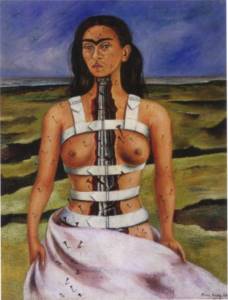
Broken Column, 1944
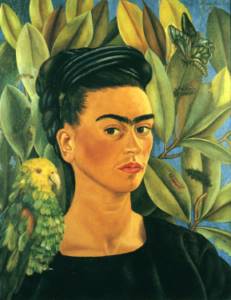
Self-portrait with Bonito, 1941
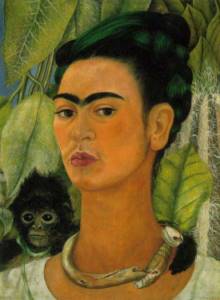
Self-portrait with a monkey, 1938
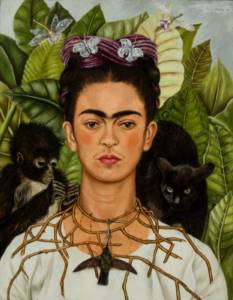
Self-portrait with a necklace of thorns, 1940
Frida Quotes
- The funniest thing in the world is tragedy.
- I drank to drown my problems, but they learned to swim.
- There is nothing more valuable than laughter; with its help you can break away from yourself and become weightless.
- Revolution is a harmony of form and color, everything moves and remains in place, obeying one law: its name is life.
- I write about myself because I spend a lot of time alone and know myself best.
- Art is an analogue of blood in the social organism of humanity.
- There have been two disasters in my life: a collision with a train and a meeting with Diego. The worst was the meeting with Diego.
Links
- Arts & Culture Google - a virtual museum where you can see more of her works, photographs of the studio, as well as Frida Kahlo's colorful outfits;
- Manege - Frida Kahlo exhibition in Moscow;
- frida-kahlo-foundation.org - unofficial site about the artist;
- artchive.ru - information about exhibitions and an archive of her works.
Read about other artists on Losko, such as Edward Hopper and his architecture of solitude.
Follow us on social networks so as not to miss new materials: Vkontakte, Facebook, Telegram - @loskomag, Instagram. If you value your own and other people's work, you can always support us financially on Patreon.
Childhood and youth
The future world famous artist Frida Kahlo de Rivera (Magdalena Carmen Frida Kahlo Calderon) was born on July 6, 1907 in Coycan (a suburb of the capital of Mexico, Mexico City). She subsequently changed her date of birth to 1910 in honor of the Mexican Revolution. Her father is photographer Guillermo Calo . Frida herself claimed that he was of Jewish origin, however, according to researchers, he had German roots. The girl's mother was Matilda Calderon , a resident of Mexico with Indian roots.
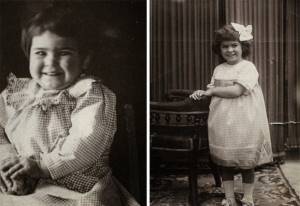
Frida Kahlo in childhood
The girl was the third child in the family. When she was 6 years old, she contracted polio, which left her crippled for life. In the future, she had to wear long skirts to disguise her physical disability. This misfortune greatly strengthened the character of young Frida Kahlo.
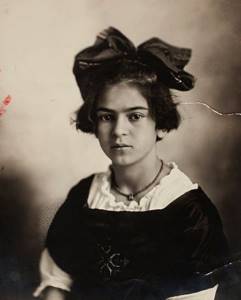
Frida Kahlo at age 11 (1919)
The girl was involved in various sports, including boxing. At the age of 15, she began studying medicine in one of the best Mexican schools, which was attended mainly by boys. There, Frida became a local celebrity, quickly gaining the interest of other students. From an early age, the girl was distinguished by shocking behavior. Initially, Frida planned to become a doctor.
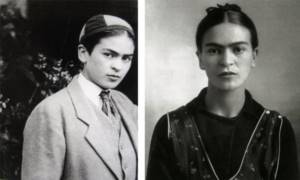
Frida Kahlo in her youth

